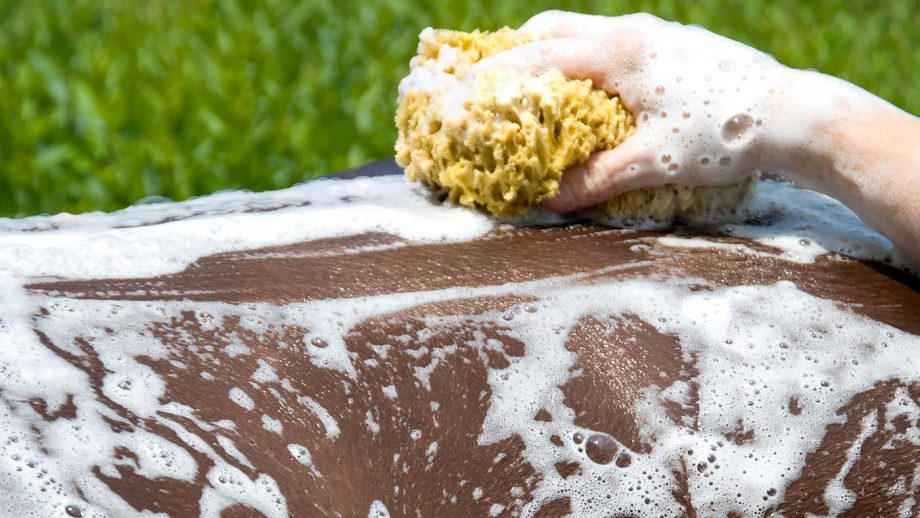For every equestrian enthusiast, understanding how to rinse a horse after shampooing is an essential part of maintaining a horse’s overall health and appearance. Proper rinsing ensures that no residue is left behind, preventing skin irritations and promoting a shiny, healthy coat. In this article, we’ll delve into the detailed steps of rinsing a horse after shampooing, helping you achieve the best results for your equine friend.

Why Proper Rinsing is Crucial
Rinsing a horse thoroughly after shampooing is crucial to remove any soap or shampoo residue. Leftover shampoo can cause skin irritations or allergic reactions, and it may attract dirt more quickly, defeating the purpose of a bath. A thorough rinse ensures that your horse’s coat is clean, healthy, and free from potential irritants.
Materials Needed for Rinsing
Before you begin, gather the necessary materials to efficiently rinse your horse. You’ll need a hose with an adjustable nozzle, a scrubbing mitt or sponge, and access to plenty of fresh water. If you’re using cold water, ensure that it’s not too icy, as this might shock your horse.
Step-by-Step Guide on Rinsing
1. Start with the Right Temperature
Ensure the water temperature is comfortable for your horse. Lukewarm water is ideal, as it helps in loosening the shampoo and is soothing for the horse.
2. Begin at the Top
Start rinsing from the top of the horse, allowing water to flow downwards. This method helps in effectively removing the shampoo as gravity aids in carrying it down and off the horse.
3. Use the Right Technique
Using a hose with an adjustable nozzle, gently spray water on the horse’s coat. Use a circular motion to ensure all shampoo is rinsed out thoroughly. Pay extra attention to areas where dirt and soap might accumulate, such as under the tail and along the mane.
4. Check for Residue
After rinsing, run your hand over the horses coat to check for any slippery spots that indicate leftover shampoo. If you find any, rinse those areas again until the coat feels clean and non-slippery.
5. Special Attention to Sensitive Areas
Be gentle around sensitive areas such as the face and ears. Use a sponge or a soft cloth to rinse these areas to avoid getting water in the horses eyes or ears.
Post-Rinse Care
1. Drying the Horse
After a thorough rinse, it’s important to dry your horse. Use a sweat scraper to remove excess water, followed by a towel to pat dry. Ensure the horse is kept in a warm area to prevent them from catching a chill.
2. Grooming for a Shiny Coat
Once the horse is dry, use a soft brush to groom the coat. This helps in redistributing natural oils and gives the coat a healthy shine. Regular grooming also helps in maintaining the coat’s cleanliness and health.
Common Mistakes to Avoid
Avoid common mistakes such as using cold water, which can cause discomfort, or neglecting to check for soap residue, which can lead to skin issues. For more on avoiding grooming errors, check this external guide.
FAQs
Q1: How often should I rinse my horse after shampooing?
A1: It depends on the horse’s activity level and environment. Generally, once a month is sufficient unless the horse becomes particularly dirty.
Q2: Can I use human shampoo on my horse?
A2: It’s recommended to use shampoo specifically formulated for horses, as human shampoos may not be pH balanced for a horse’s skin. Learn more about pH balance in horse shampoo.
Q3: What should I do if my horse is scared of water?
A3: Gradually introduce your horse to water using a gentle approach, and be patient. You can also consult a professional for tips on managing such behavior.

Conclusion
Properly rinsing a horse after shampooing is an essential part of equine grooming. By following these steps, you can ensure your horse’s coat remains healthy and beautiful. Consistent grooming practices contribute to the overall well-being of your horse, making it a rewarding experience for both you and your equine companion.
This article contains affiliate links. We may earn a commission at no extra cost to you.
